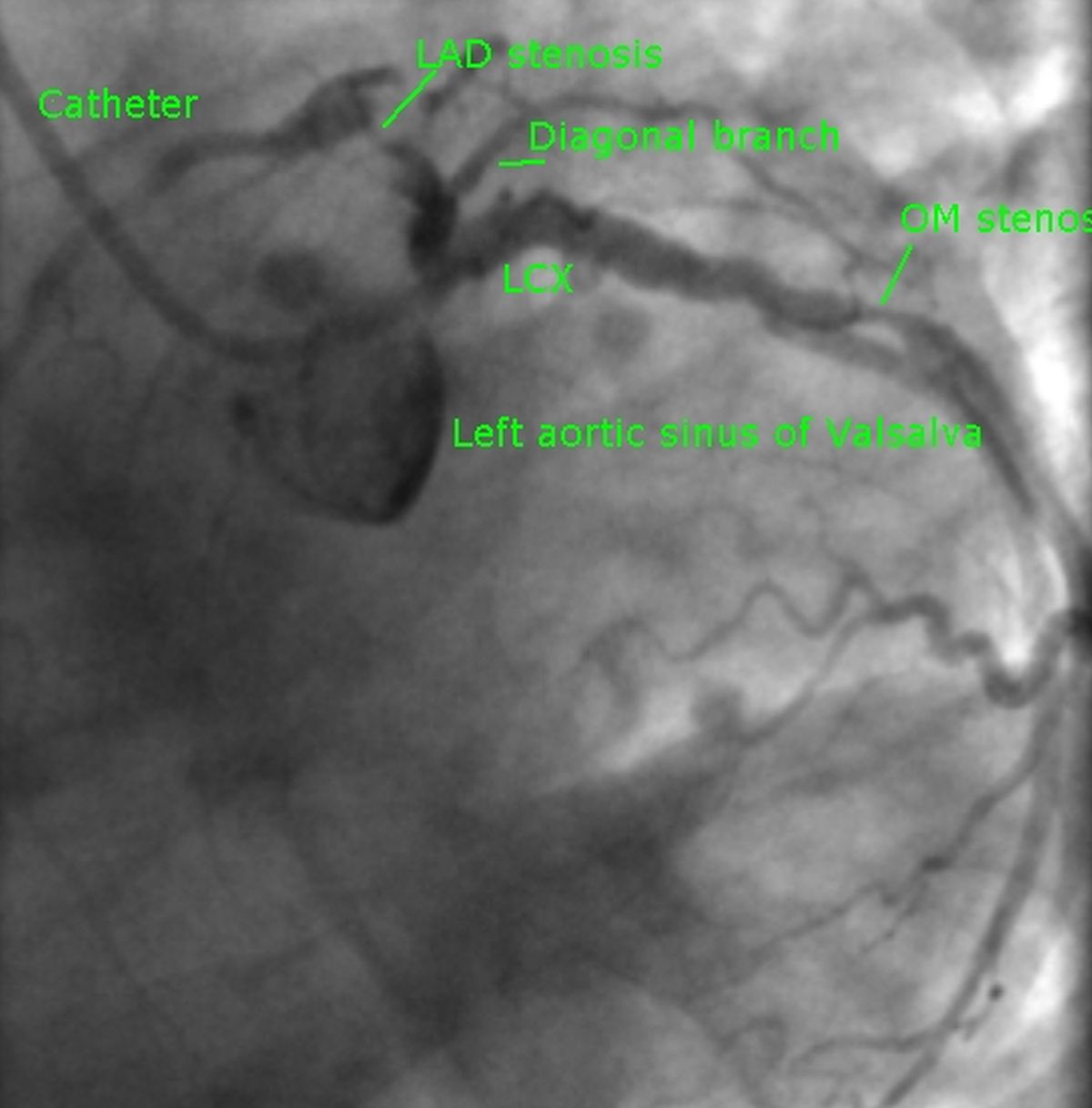Spider view – LAO caudal view – coronary angiogram
Spider view – LAO caudal view – coronary angiogram

Spider view – LAO (left anterior oblique) caudal view [1] is often the first view taken during diagnostic coronary angiography. It has the advantage of visualizing the proximal left anterior descending coronary artery (LAD) and left circumflex (LCX) coronary artery along with the left main coronary artery. In this case the left main is not seen well as it is a delayed image. Proximal tight stenosis of the left anterior descending (LAD) coronary artery is seen, as well as significant stenosis of an obtuse marginal (OM) branch of the left circumflex (LCX) coronary artery. This view is not good for visualizing the distal parts of the left system and fore shortens the coronary branches. Yet this view is useful during coronary angioplasty to check whether a stent placed in the proximal LAD is impinging on the left main or likely to pinch the ostium of the LCX. Dye reflux in the left aortic sinus of Valsalva is seen, indicating that there is no wedging of the catheter in the left coronary ostium. If there is wedging, the pressure monitored from the catheter tip will be damped and angina, ST segment elevation or hypotension are likely if the catheter is not promptly withdrawn and repositioned. Wedging at the left main ostium should also alert us to the possibility of significant left main ostial stenosis. Injecting into the left main ostium in a wedged position can cause ostial dissection and catastrophic outcome unless it is promptly recognized and managed.
A large coronary aneurysm of the left anterior descending coronary artery in Bechet’s Disease has been described as a spider in the spider view [2]!
References
- O Aquilina, V Grech, H Felice, J Debono, A Fenech. Normal adult coronary angiography. Images Paediatr Cardiol. 2006 Apr;8(2):1-16.
- Servet Altay, Muhammet Gürdoğan, Mustafa Adem Yılmaztepe. A Spider in the Spider’s View: Behçet’s Disease-related Giant Coronary Aneurysm. Balkan Med J. 2020 Feb 28;37(2):112.

